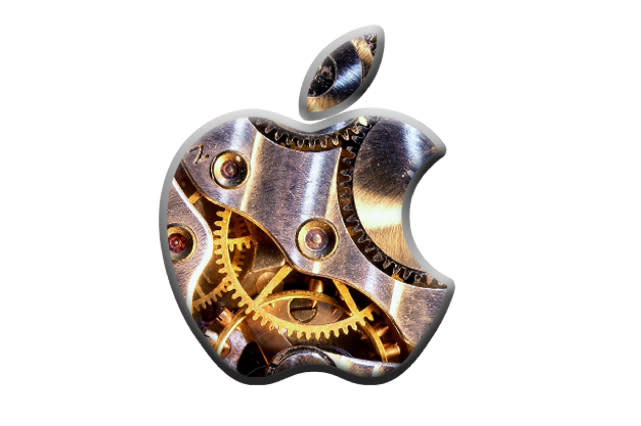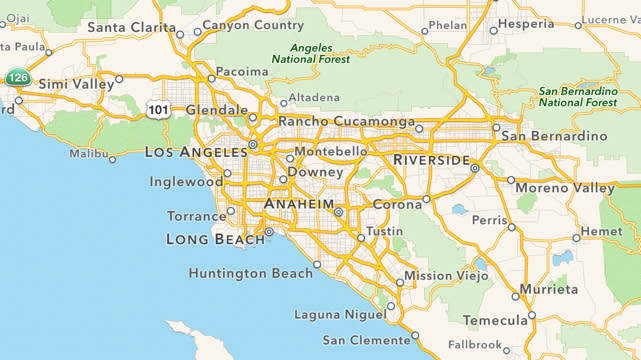Engadget has been testing and reviewing consumer tech since 2004. Our stories may include affiliate links; if you buy something through a link, we may earn a commission. Read more about how we evaluate products.
How quickly does Apple turn acquisitions into products?

"Apple buys smaller technology companies from time to time, and we generally do not discuss our purpose or plans."
That is Apple's boilerplate response to just about every publicized acquisition the company makes, like the recent buy of micro LED company LuxVue. It's a great catch-all whenever the Cupertino giant swallows up a smaller fish, but Apple can't keep us from connecting the dots later on. After the reveal of a new Apple product or feature, past purchases suddenly become a bit more clear.
Apple has done a whole lot of acquiring in the past year or so, but how long does it take before we'll see the fruits of those purchases? It's unpredictable to say the least, as each company provides pieces small or large to upcoming products. First, let's look at some recent acquisitions that yielded tangible results.
Quatro Wireless
Acquired: March 2010
Product launch: July 2010 (iAd)
Time: ≈4 months
Apple snapped up this mobile ad platform developer and had a shiny new mobile ad network within months for the launch of iOS 4.
Siri
Acquired: April 2010
Product launch: October 2011 (Siri personal assistant)
Time: ≈18 months
Siri was a standalone app before Apple bought the company and turned it into a household word. It took a year and a half from acquisition to Siri's Apple debut, but the sassy personal assistant is now a huge part of Apple's mobile identity.
IMSense
Acquired: July 2010
Product launch: September 2010 (HDR photography in iOS 4.1)
Time: ≈3 months
Apple wanted HDR tech for iOS and IMSense happened to specialize in exactly that. A quiet acquisition was sleuthed out after the feature was announced for iOS 4.1, and the turnaround was a quick three months.
AuthenTec
Acquired: July 2012
Product launch: September 2013 (Touch ID)
Time: ≈14 months
AuthenTec's fingerprint sensor tech made this acquisition big news, and just over a year later the iPhone 5s finally made use of it.
The length of time between when Apple buys a smaller company and the resulting product can vary greatly. Apple, as you would expect, keeps team structure and projects under extremely tight wraps even after the fact, so all we can do is guess at how much progress the company had made on any of these products -- if any -- before it brought in specialists through an acquisition.

There are also products like Maps, which has been the root of many Apple purchases over the past few years as Apple continues to hammer the lingering issues out of it.
Placebase - acquired July 2009
Poly9 - acquired July 2010 - World mapping
C3 technologies - acquired August 2011 - 3D mapping
New Apple Maps is launched - September 2012
WiFiSlam - acquired March 2013 - Indoor location tracking
Locationary - acquired July 2013 - Point of interest mapping
HopStop - acquired July 2013 - Walking maps, transit information
Embark - acquired August 2013 - Transit mapping
BroadMap - acquired December 2013 - Location data, point of interest mapping

Other acquisitions haven't yielded any super obvious results, such as the September 2010 purchase of facial recognition company Polar Rose. Apple has had a facial recognition feature in iPhoto for some time now, but has not yet added it to their mobile offerings.
Apple added a facial detection API to iOS -- which can identify a face as human, but not specific individuals -- in October 2011 with the release of iOS 5, but has yet to implement any facial recognition directly into iOS. It would certainly make sense for the Polar Rose team to be involved with the facial detection development, but the Swedish startup's most notable accomplishments have not (yet) been translated into a new Apple product or feature. They could be working to improve iPhoto's recognition, or are working on some other project.
If there's any trend to be seen across all of these acquisitions it's that Apple's buyouts yield seemingly erratic results. Predicting when a new product or feature will debut based on these procurements is a dangerous game with very little stability.
Like any tech giant, Apple buys smaller companies for a variety of reasons, from talent to fully-realized products. Cases such as Siri, which Apple essentially adopted and iterated upon, are the exception to the rule, with many other instances not translating into obvious results. As is so often the case when it comes to Apple, it's all a bit of a guessing game.

